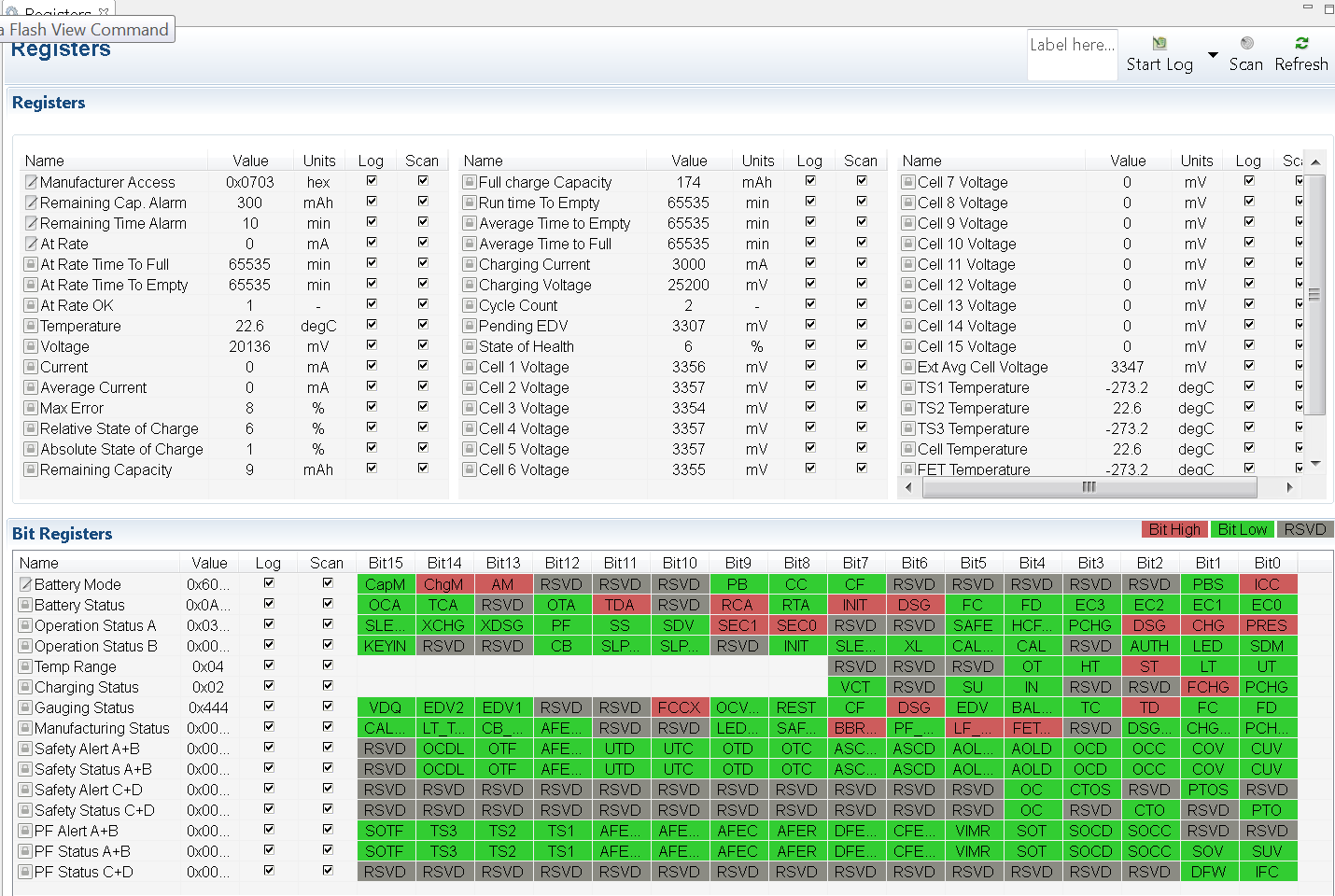Other Parts Discussed in Thread: BQSTUDIO
Dear support,
we have an issue with fuel gauge especially with the FCC parameter.
We did learning cycle. Charge -Discharge-Charge to full. The cylce where made in our devices with BQ24610RGET charger. Battery pack was checked in charge and discharge condition. Later on the Device was switched off and carried to stock. After three weeks we checked device and switched it on by battery. RSOC was decreasing very fast and steppwise. For example from 90% directly to 7%. We analysed parameters with bqstudio and figured out FCC parameter was very low. Should be arround 2700 mAh and was 174 mAh. The learn parameter was not there anymore. How can this happen?
While device is in stock battery gets discharged by device with 3 mA constant current.
best regards
Ingmar



